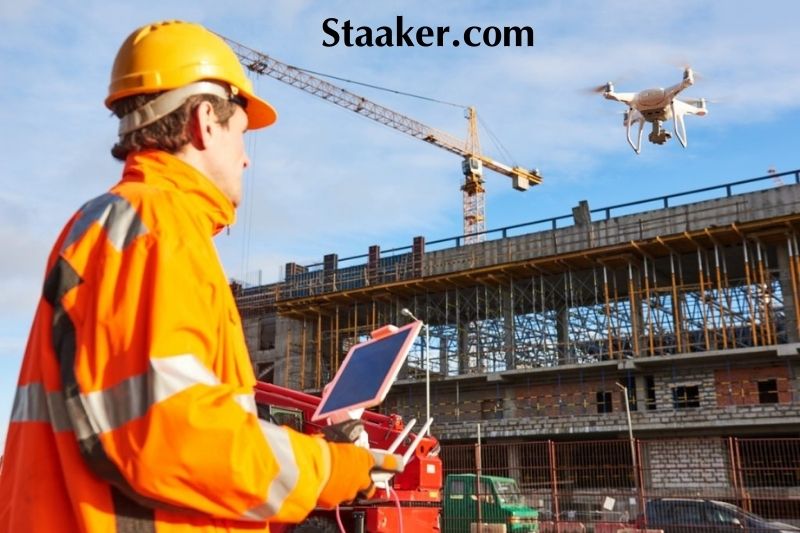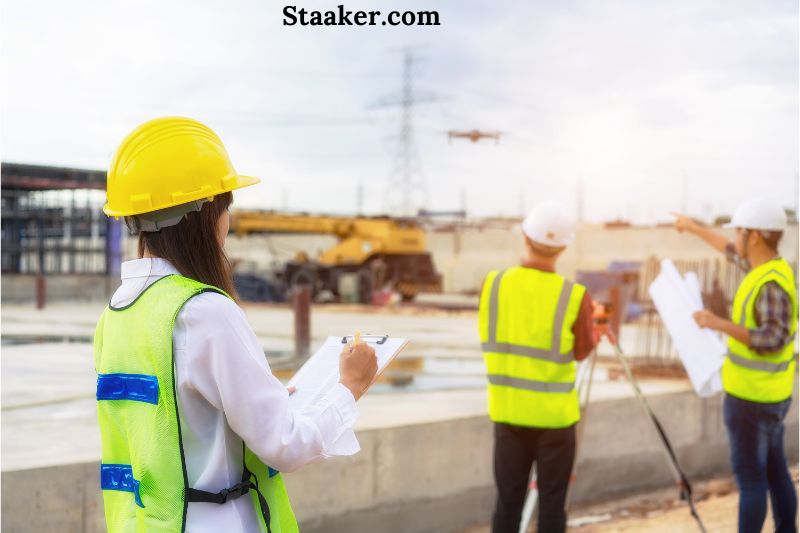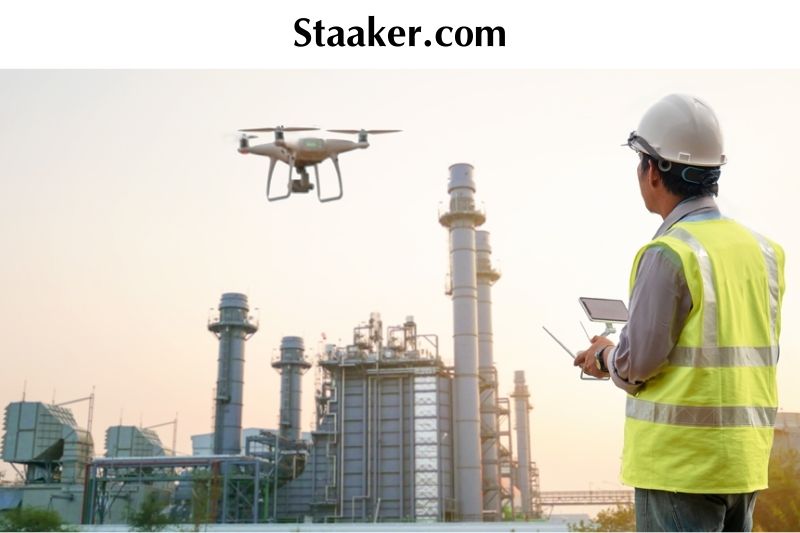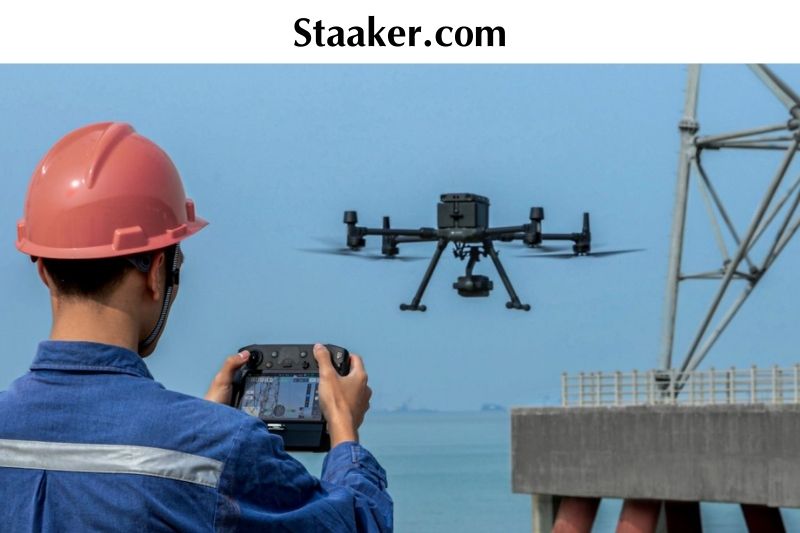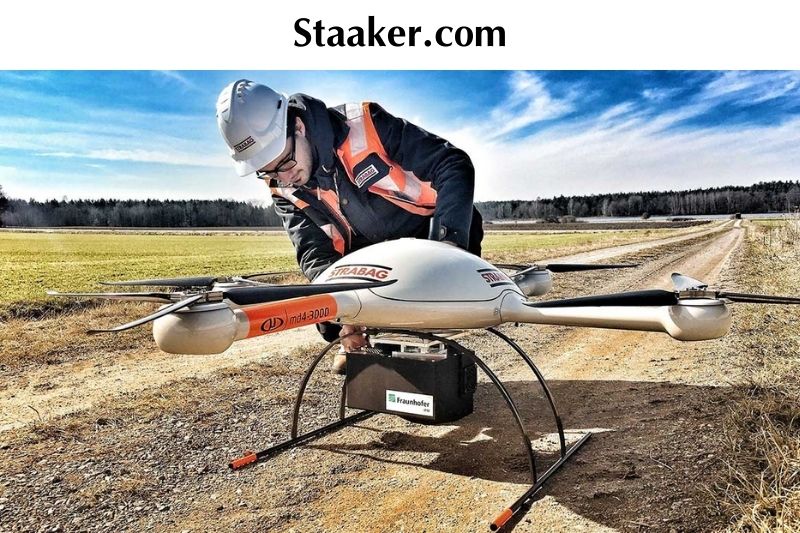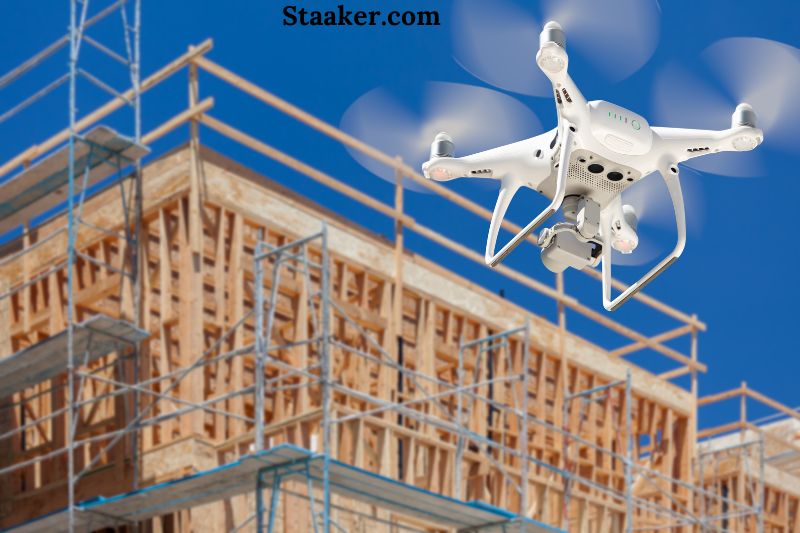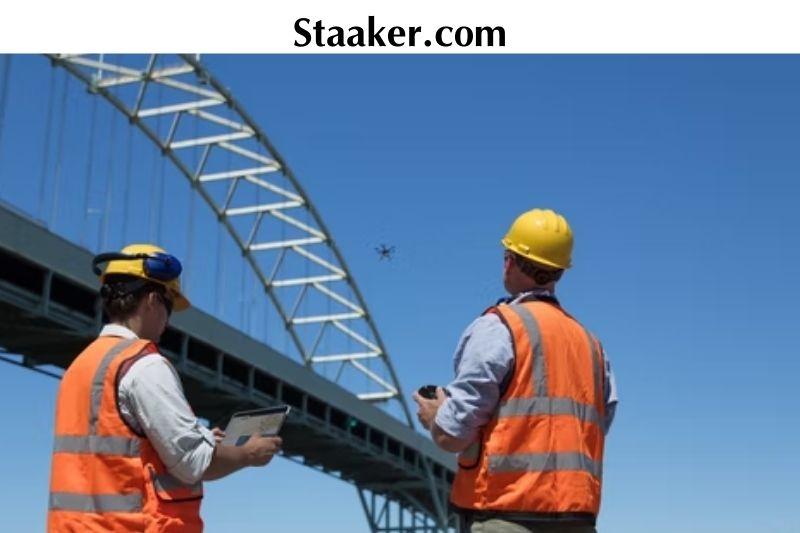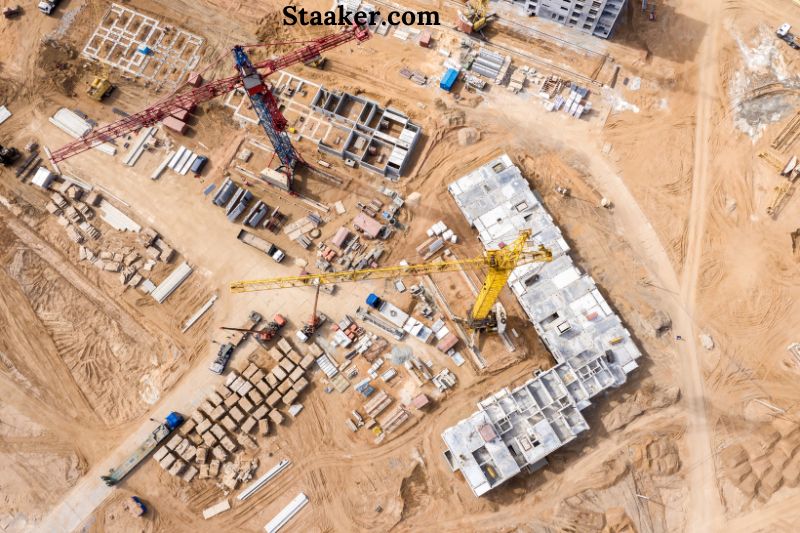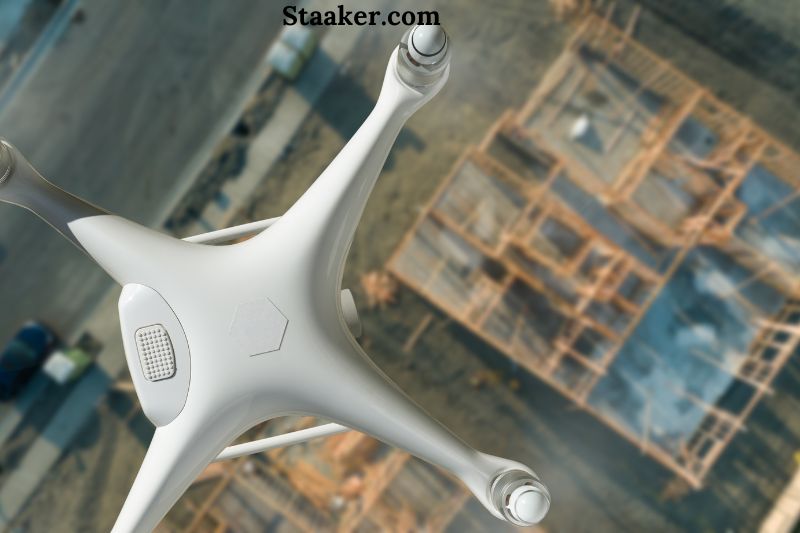Drones. You have undoubtedly heard of them and observed them around. Drones provide numerous possibilities and applications, including in the construction industry, whether flying about a room or gathering aerial imagery.
Drones in construction are being used to inspect buildings, map sites, and even deliver construction materials. They have become one of the most appealing construction innovations in recent years. The industry has experienced a 239 percent increase in the use of drones from one year to the next, which is higher than any other business sector.
Their overhead perspective and data-gathering capabilities make them a valuable tool, with benefits ranging from on-site security to distant monitoring.
Specifically, the advantages of drone technology have transformed the entire project life cycle, from idea to completion. Drone photographs, videos, and imagery are utilized for project planning, construction tracking, and real-time updates.
The use of drones in construction will continue to soar as the industry expands and construction projects get more sophisticated. By reading on, you can learn more about how these futuristic technologies are revolutionizing the industry.
How Are Drones Used In The Construction Industry?
Drones can boost productivity, save expenses, and streamline workflow due to their ability to record real-time data and their unique aerial edge. Here are some of the construction applications of drones.
1. Cartography and Land Surveys
Using topographic maps while planning complex, large-scale construction projects is vital. They can uncover costly errors in designs unsuitable for a particular terrain. Although topographic maps are helpful, they are expensive and time-consuming to create. Due to this, maps are not usually updated at the beginning of a project.
Drones drastically reduce the time required to visualize a site’s topography due to their capacity to map enormous land areas. This assures accuracy and helps keep the project on schedule and within budget before the project is launched. This information can help establish feasibility and aid in the design process.
In addition, the high-resolution photographs captured by drones may be converted into 3D models, enabling the construction crew to identify obstacles during the pre-construction phase and identify errors in the project’s scope, saving time and money in the long run.
2. Equipment Monitoring
Almost every project manager has encountered this issue: losing track of where equipment is situated on each job site. There are typically numerous lengthy spreadsheets that can rapidly become an Excel nightmare (unless you have rental management technology).
Using a drone, the same manager may swiftly determine whether the necessary equipment is in place. They can also rapidly determine if a piece of equipment that should have been removed is still on-site, thereby avoiding costly extension fees.
Equipment malfunctions are yet another typical problem. The recording capability of drones could be utilized to remotely identify difficulties and offer visual representations to aid in expressing those issues. Before arriving on-site, operators can transfer recorded data to repair professionals at equipment rental businesses for faster and more precise diagnosis.
3. Remote Monitoring and Status Reporting
Another advantageous characteristic of construction drones is their ability to provide clients with visibility. Drones may generate beautiful overhead views and provide clients with a sense of the project’s progression, mainly when they cannot visit the site in person. This reassures customers that their expenditures are being utilized effectively.
In addition to facilitating client contacts, drones can enhance team collaboration by transmitting data to connected software during flyovers. Design teams, engineers, construction managers, employees, and owners can access the data to monitor the project and identify any errors. Additionally, drones can leave a valuable paper trail that teams can access later.
4. Security Monitoring
If you have ever had equipment stolen from a job site, you understand how damaging it can be. Theft of a boom lift or excavator can cost tens or even hundreds of thousands of dollars. According to the National Equipment Register, more than $300 million of construction equipment is stolen annually, with less than a quarter of it recovered. Equipment security is, therefore, a crucial aspect of project management.
A drone operator may rapidly determine whether a piece of equipment is in a secure position by conducting a flyover. Additionally, they can use the security camera to detect unauthorized individuals on the premises. This can aid in preventing damage or theft and in identifying any intruders.
5. Personnel Safety
Safety is a high priority for the majority of construction companies. Falls account for 34 percent of all workplace fatalities. Employees are frequently required to ascend to unstable platforms and negotiate hazardous conditions when collecting manual measures. In these circumstances, drones can replace employees and lessen construction workers’ dangers on the job site.
Using drone video cameras, construction supervisors may monitor the project site for safety concerns, ensuring that workers are correctly balanced and that no buildings or equipment are loose or unstable.
6. Structure Inspection and Photographic Documentation
Drones can replace cumbersome machinery and cumbersome scaffolding to conduct vital inspections. They can be flown around structures to examine their stability and fine details and capture high-resolution images for study. Thermal sensors can detect heat leakage, cold spots, and electrical problems. This level of quality assurance is beneficial to long-term client relationships.
Planned maintenance of more significant buildings, such as bridges, towers, roofs, and scaffolding, can also be performed using drones. A work that would need a whole team of surveyors to complete would take a drone operator a few hours.
Construction Drones: Types
There are numerous varieties of drones, but commercial drones are the norm in the construction industry. Some models use fixed wings, while others feature rotors. The primary distinctions between them lie in their respective designs and applications.
Fixed-wing UAV
Fixed-wing drones can glide along predetermined paths and reach greater heights than other types of drones due to their airplane-like construction. This makes them efficient for pre-construction activities such as topographic mapping and land surveying. However, they can only fly forward, making them ineffective in locations with many barriers or confined spaces.
Quadrotor Drone
Rotary drones can hover in place and remain stable due to their rotor design, making them easier to handle than fixed-wing drones. These drones are ideal for short-distance airborne inspections, structural scanning, photography, and surveillance.
Key Attributes
Multiple elements, such as cameras, GPS units, thermal sensors, and infrared sensors, are installed on drones to aid in collecting crucial data on construction sites. The data acquired by drones can be transmitted to a computer via software, allowing users to evaluate, interpret, and arrange the data. These characteristics enhance the efficacy of project management and enable more comprehensive inspections.
While the use of drones in construction is not new, construction businesses are adopting them at an unprecedented rate. Drones are indispensable in the field, whether used to do land surveys or track equipment.
Additionally, drones have apparent advantages for the construction lifespan. Their capabilities reduce expenses, time, risk, and labor while enhancing workflow, accuracy, and communication. All of these factors increase workers’ confidence and certainty in building projects.
While the impact of drones on the construction business is still evolving, they have already revolutionized the industry and altered how building projects are managed. As long as the technology can overcome government aviation and zoning obstacles, it is safe to predict that commercial drones will continue to exist. For additional information, please view the infographic below.
Is There Work To Be Found In The Construction Of Flying Drones? And What Is The Reward
According to a survey compiled by Skyward last year, the most significant portion of the commercial drone sector comprises drone building activities.
Three-fifths of the organizations questioned that reported using drones in their operations were in the construction and engineering industry (i.e., working with drones in construction and related projects).
So, if you’re a drone pilot looking for work on a construction site, the data suggests that work is available, assuming you have the necessary skills.
In-House or Freelance?
Okay, so you want to work as a construction drone pilot. Should you seek employment with a company’s in-house drone program, or should you seek employment as a freelance pilot?
In our 2019 Drone Industry Survey, 23 percent of respondent drone pilots (86 out of 370) reported working in the Construction / Mining / Aggregates industry. This was the largest category of individuals that flew drones as part of an internal drone operation.
A similar proportion of freelance / self-employed drone pilots worked in construction, with 23 percent (81 out of 353) of self-employed respondents employed in Construction / Mining / Aggregates.
Based on this information, there is likely work available either by joining an in-house drone program or freelancing.
How Much Money Could I Make Flying a Drone in the Construction Industry?
According to our research, self-employed drone pilots earn approximately $50 per hour for drone construction work, but highly proficient pilots can make anywhere from $250 per hour to over $500 per hour.
According to the data, if you work for an in-house drone program in construction rather than for an hourly salary, skilled drone pilots can earn between $50,000 and $70,000 or more per year.
It is essential to note that these figures may change based on geography, experience, and skill level.
Future Construction Drone Applications
Although the use of drones in construction is not new, building businesses are adopting them at an unprecedented rate. Drones are proving to be essential in the field, whether used to do land surveys or follow equipment.
As technology progresses, drones will be able to do more building tasks. In 2020, Kaizen Aerial Solutions unveiled their new industrial drone, the xFold, which can lift 1,000 pounds. Due to its large lifting capability, this drone can deliver construction materials and other big cargo to construction sites. It includes optional attachments such as 3D mapping sensors, robotic arms, and fire-extinguishing ball droppers.
Additionally, drone technology is growing in other sectors. Drones will likely be able to control and guide autonomous automobiles. Amazon and other firms have tried systems that combine drones with self-driving automobiles and delivery trucks; similar technology could aid in transporting construction supplies and guiding construction equipment.
The existing capabilities of drones enable them to reduce costs, time, risk, and labor while enhancing workflow, accuracy, and communication. Future widespread implementation of these technologies will further streamline the construction life cycle.
While the impact of drones on the construction business is still evolving, they have already revolutionized the industry and altered how building projects are managed. As long as the technology can overcome government aviation and zoning obstacles, it is safe to predict that commercial drones will continue to exist.
Read more:
- Best Places To Fly A Drone And Where Are Drones Banned 2022?
- How Loud Are Drones? How to make Drone Quieter? (2022)
- What Is Headless Mode On A Drone: Top Full Guide 2022
Conclusion
Drones in construction are here to stay, becoming more and more popular. They can help workers plan their work, track their progress, and deliver materials to construction sites. They are valuable tools that can make construction projects more efficient and easier.
So be sure to keep your drone in good condition and use it to its full potential in construction projects. Staaker.com hopes you find this guide useful.


